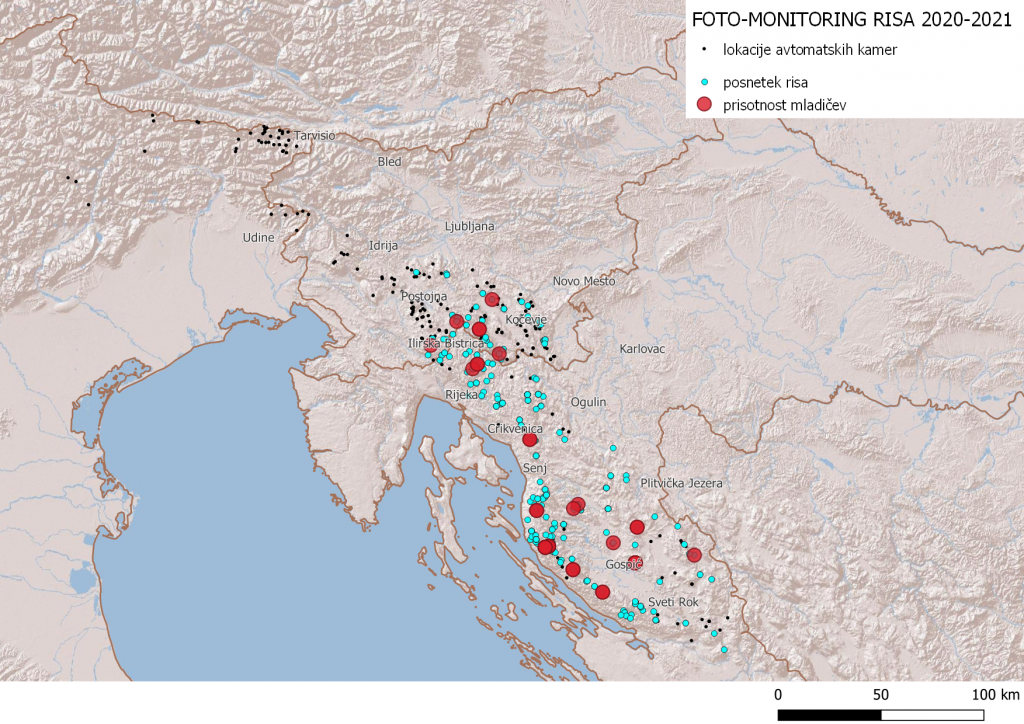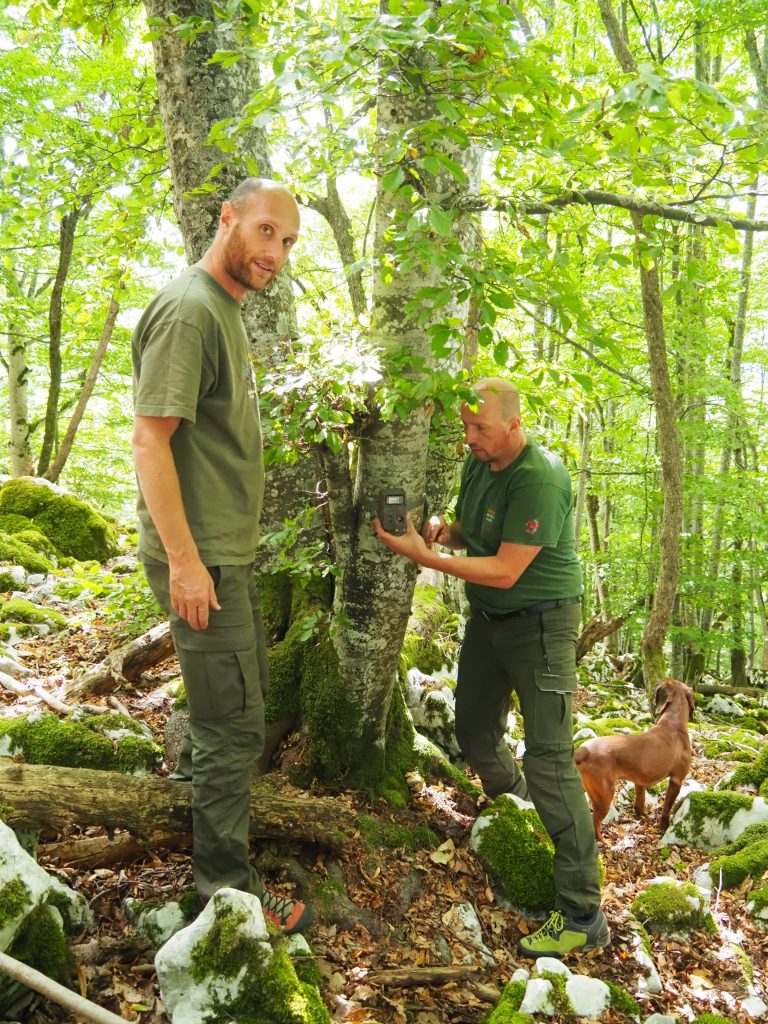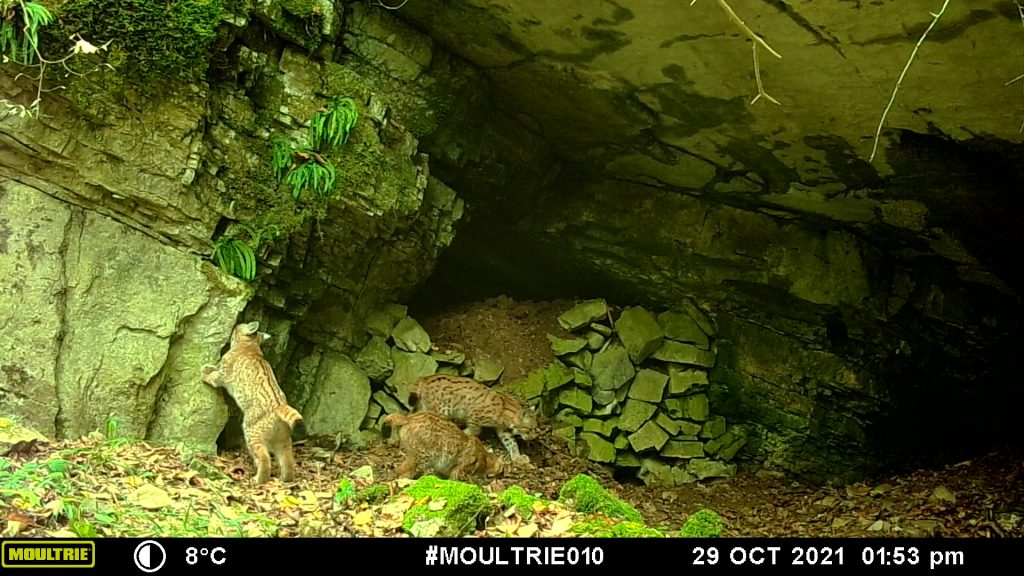We have prepared a second report on the surveillance of lynx reinforcements in Slovenia and Croatia. Using different monitoring methods, we recorded 95 adult lynx in the Slovenian and Croatian Dinarides during the 2020/2021 season. Five lynxes have their territories in the Slovenian Alps.

Map of the lynx monitoring area in the 2020/2021 season, locations of automatic cameras (black dots) and locations where adult lynx (blue dots) and pups (red dots) were photographed.
With the help of 76 hunters, we monitored lynx over a 4000 km2 area in Slovenia with more than 200 camera traps. We found that 24 adult lynxes were present in the Dinaric part of Slovenia in the 2020/2021 monitoring season, of which three were also photographed in Croatia.

Setting a camera trap with a local hunter. Photo: LIFE Lynx
The LIFE Lynx project has so far released 13 lynxes into the wild; 4 in Croatia and 9 in Slovenia. Four of them have already integrated into the population in Slovenia and Croatia, while three of the released lynxes have probably not been integrated, as their presence is no longer being detected for a long time. The six lynxes released last year are on a good path to integrate into the population. By the end of the project, 14 animals will be included in the Dinaric-SE Alpine population.
The first translocated lynx, Goru, had offspring with a remnant female lynx at least twice, and most likely for the third time. In total, five litters of lynx pups were recorded in the Dinarides in Slovenia in 2020/2021, which is more than in the previous period. In 2021, the first litter of lynx was also recorded in the Julian Alps.

Lynx cubs on Mala Gora, Slovenia. Photo: LIFE Lynx
For the first time we also calculated an estimate of lynx population density for Slovenia, which is 0.6-1.0 lynx/100 km2 in the core of the population, comparable to other introduced lynx populations in Europe, but lower than in the Carpathians.
Inbreeding is the biggest threat to our lynx so we monitor the population status also through genetic analyses. These show that we have halted the deterioration of the genetic status of the population by introducing lynx.
The work of the LIFE Lynx project is not yet complete; this year we will continue with the translocations of lynxes to the Dinaric region, with plans to translocate two lynx to Slovenia and two to Croatia.
